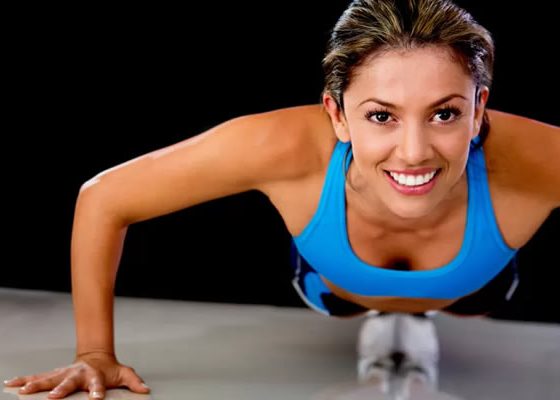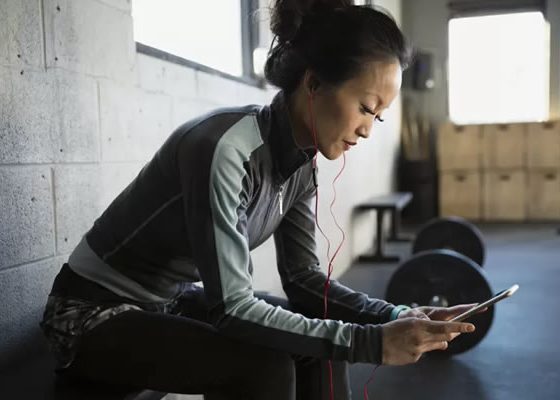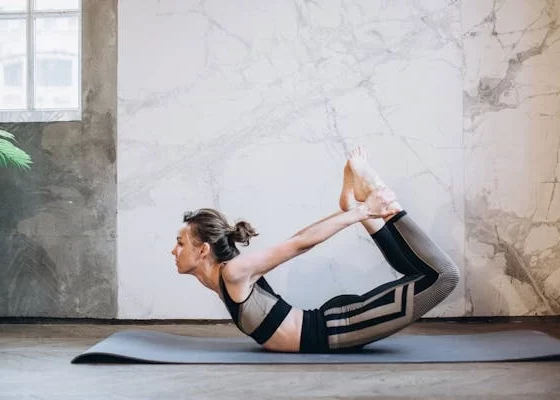Building strength to perform yoga inversions is important for beginners and intermediate yogis alike. For best results, training should include a combination of yoga poses and resistance exercises that target the muscle groups involved in inversion poses. Add each exercise to your routine two or three times a week.
Chest and Shoulders
Most yoga inversions involve some sort of arm balance, which requires strength in your chest and shoulders. The following moves directly work these muscles.
Pushups
The pushup is one of the simplest ways to work your chest using your body weight alone. It also effectively engages your shoulders. There are varieties for every angle.
- Basic or wide: Beginning with your hands underneath or wider than your shoulders, these work the center of your chest.
- Jackknife: Also known as the downward dog pushup, this works the top of your chest.
- Pushup with rotation: Alternating between a pushup and side plank, this works the inner and outer muscles of the chest.
- Chaturanga: Also known as a narrow pushup, this is a yoga pose which is completed with your arms hugging into your ribcage.
Pick one or two different pushups per workout. Complete three sets of 10 to 12 repetitions of each type.
Chest Fly
The chest fly is a great way to build your pecs while practicing the motion of drawing your arms toward the centerline of your body. You’ll need that in order to master arm balances. To truly reap the benefits of this exercise, complete it with a different piece of equipment for each workout you add it to.
- Cable pulley
- Dumbbells
- Resistance bands
Eight to 12 repetitions will light up your muscles. Complete three rounds.
Abdominals
Inversions require core strength and stability, especially throughout the abdominals. The following moves will firm up your middle muscles and help you hike your hips when it comes time to perform the inversions themselves.
Stability Ball Pike
The stability ball pike is perfect for practice getting into inversions like the headstand and handstand. It directly works the lower abdominals while stabilizing your shoulders. Complete three sets of 10 to 12 reps. If this is too much, an easy modification is to draw your knees in toward your chest. If that’s still too difficult, ditch the stability ball and start in a simple plank. You can always work your way up from there. Hold for 10 to 15 breaths before releasing to rest.
Crunches
The crunch is a move that’s accessible to everyone and very easy to add to the beginning or end of a workout. There are many types that can help you on your way to inversions.
- Traditional crunch: Simple yet effective, this works the centerline of your abs.
- Reverse crunch: This move hits the lower abdominals.
- Medicine ball leg raises: These add a bit of resistance to build strength in the entire abdominal line.
For best results, perform them back to back for 30 to 45 seconds each, three rounds total.
Inner Thighs
Most people forget that the inner thighs are also part of the core muscle group. Engaging these during inversions supports the abdominals and lower back, which help you maintain balance with proper form.
Side Lunges
The side lunge, which targets the glutes and quads as well as the inner thighs, is among the best exercises for toning and strengthening the lower body. Complete two rounds of 10 to 15 repetitions on each side with or without dumbbells in hand. As an alternative, you can practice yoga poses that involve moving into a side lunge position, such as Warrior II or Side Angle.
Standing Slider Hip Adductions
The standing hip adduction resembles the side lunge because the end position is the same. It also works the same muscles. The key difference is the leg that moves. If you’re working out on a carpet, you can use a furniture slider. If you’re on a smooth surface, a towel will do.
- Stand with your feet hip distance apart, your right foot on the towel or slider.
- Keeping your weight in your left leg, bend your left knee and slide your right foot out to the side. Only go as far as you can while maintaining proper form.
- Simultaneously straighten your left leg and slide your right foot back to the center.
Complete 10 to 12 repetitions on each side for two rounds total.
A Strong Foundation
Yoga inversions are accessible to everyone as long as you put in the work. You can strengthen the muscles of your chest, shoulders, abdominals, and inner thighs to build a strong foundation for your inversion practice. Be sure to add a regular routine of yoga postures to improve your range of motion too. This will aid in boosting confidence and improving stability.



